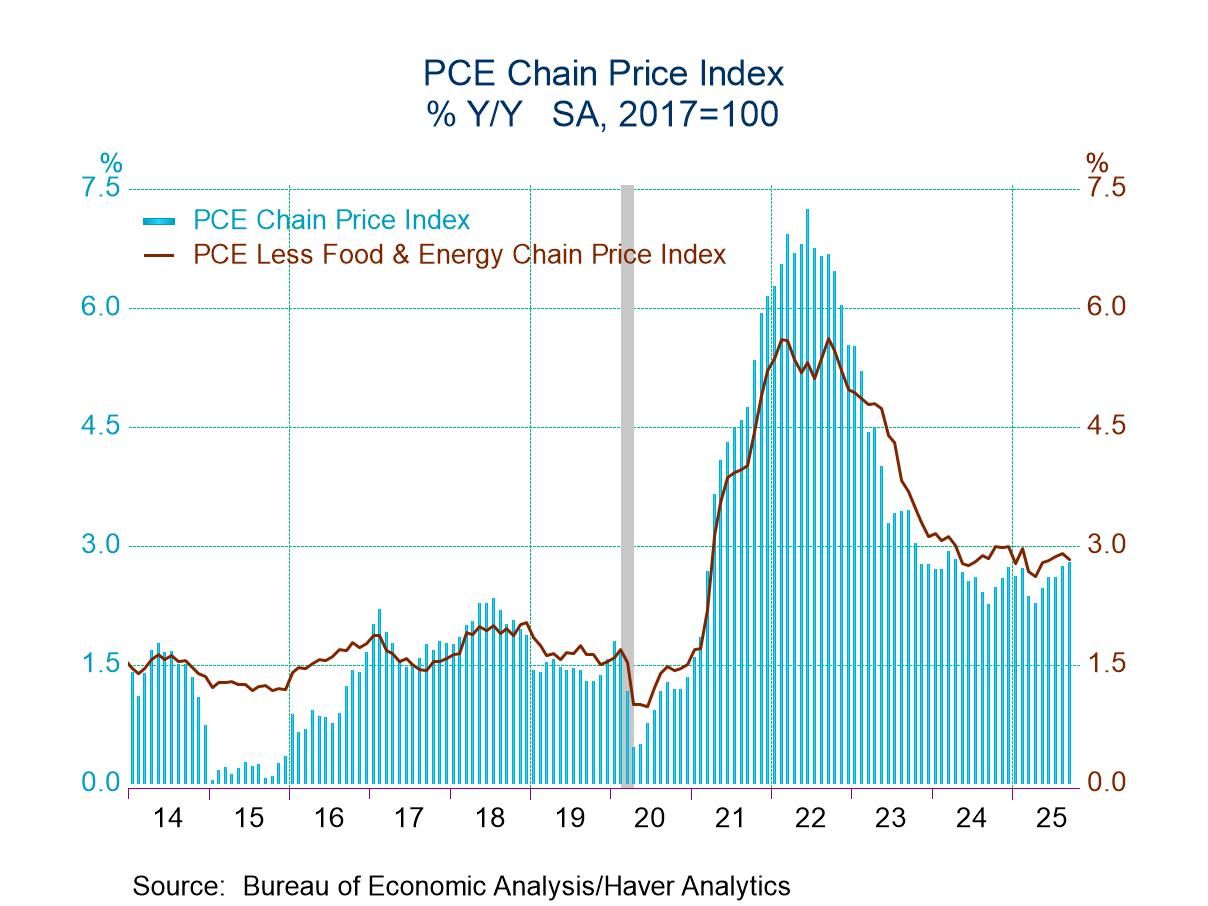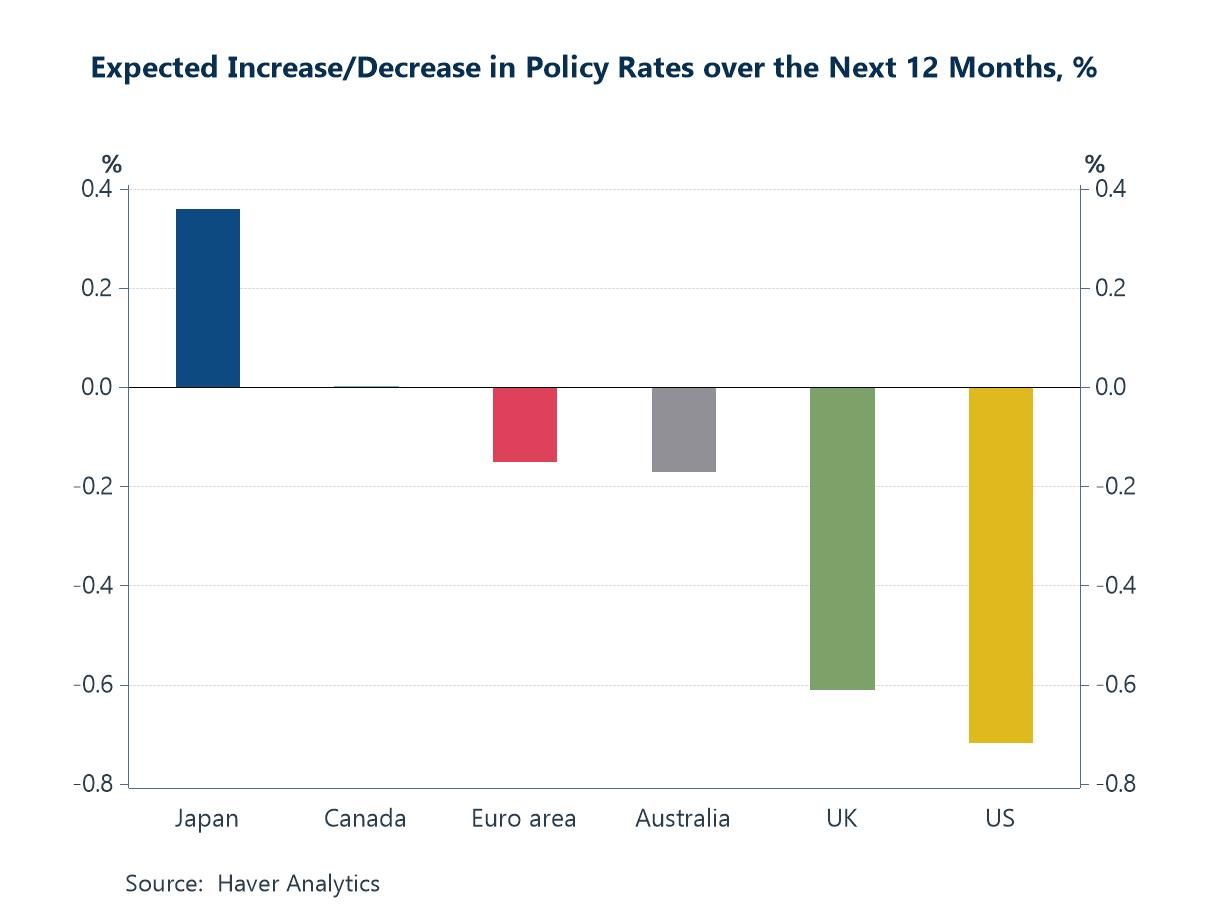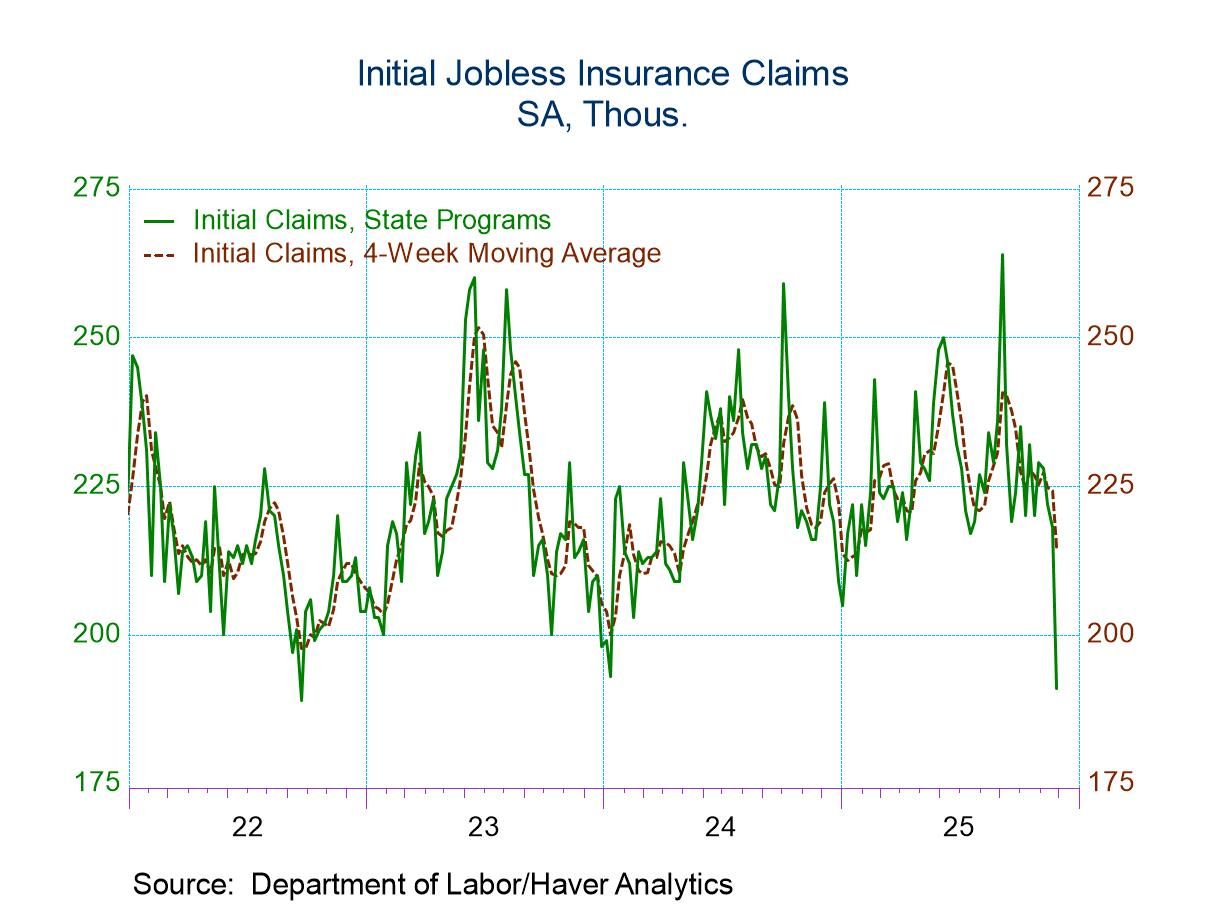 Global| Jul 01 2025
Global| Jul 01 2025Global Manufacturing PMIs Mixed Story in June

The global manufacturing PMIs from S&P are largely mixed in June with 9 of the 18 surveyed economies showing manufacturing improvement and 9 showing deterioration. However, there's relatively more improvement shown among the large economies with the euro area, Germany, the United States, the United Kingdom, and Japan also showing improvement in the manufacturing sector in June.
Median manufacturing readings moved down slightly month to month in June; the sequential readings from 12-months to six-months to three-months still show slight slippages in train.
Diffusion readings measure a breadth of improvement from period to period. These readings show a 61.1% breadth over 12 months compared to a year ago; over six months compared to 12-months the breadth slips sharply to about 27%; over three months compared to six-months breadth improves to about 39%; however, that's still below 50% which is the neutral reading. Clearly on balance more are slipping that are improving.
There are some sequential trends clearly showing that conditions are still touch and go and still not improving although the counterpoint to that is that year-over-year, the six-month to 12-month, and the three-month to six-month changes show consistent improvement for the United States, France, Germany, the euro area and that on that comparison India is also doing better at each venue.
The pooled data are not particularly impressive or encouraging. However, it's clear that there are some centers of strength and of firmness and enough to be somewhat encouraging because the large economies do tend to lead the way and right now, they are the stronger group of economies.
Readings in terms of strength show that, on the whole period, back to January 2021, the euro area, Germany, France, and the U.S. all have standings in their June readings that are above their medians; for that period Japan also has a standing above its median. India has a standing in its 90th percentile, an extremely strong reading. The large economies, and at least one of the large developing economies, are having some success.
The percentile standings, however, drive home a message that the median ranking among reporting countries for this period is in its 32nd percentile, close to the one third mark and nowhere near the median for its historic queue of data - and that's not encouraging.
Polled together on unweighted data, the U.S., the U.K., the European Monetary Union, Canada, and Japan have a queue standing on the period in only its 45th percentile. The BRIC countries are only in their 40th percentile. The average among Asian countries is only in its 37th percentile.

The report for the month is more disappointing that we would hope for; however, it's not without a few bright spots and those bright spots are substantially linked to performance in the larger, more developed, economies where inflation appears to be coming to head and where central banks will, because of that progress, gain more flexibility. There's also some good news/bad news operating in the background and that is that, because of the more hostile geopolitical environment, there's going to be more military spending going forward. The good news part of that is that military spending will help to underpin growth and jobs and help to sustain economic growth going forward.
Robert Brusca
AuthorMore in Author Profile »Robert A. Brusca is Chief Economist of Fact and Opinion Economics, a consulting firm he founded in Manhattan. He has been an economist on Wall Street for over 25 years. He has visited central banking and large institutional clients in over 30 countries in his career as an economist. Mr. Brusca was a Divisional Research Chief at the Federal Reserve Bank of NY (Chief of the International Financial markets Division), a Fed Watcher at Irving Trust and Chief Economist at Nikko Securities International. He is widely quoted and appears in various media. Mr. Brusca holds an MA and Ph.D. in economics from Michigan State University and a BA in Economics from the University of Michigan. His research pursues his strong interests in non aligned policy economics as well as international economics. FAO Economics’ research targets investors to assist them in making better investment decisions in stocks, bonds and in a variety of international assets. The company does not manage money and has no conflicts in giving economic advice.






